This Sahara Rose 1963 Ford Thunderbird coupe is knocking on 60 years on this earth without needing to be restored, repainted, or repaired. The car’s condition is as pristine as anything rolling across the auction block at Barrett Jackson or Mecum without the stigma of being a “trailer queen”. Until last year, the Thunderbird had spent its whole life in Colorado before car-rescuer Ryan Richards bought it and drove it, sight unseen, back to Texas.
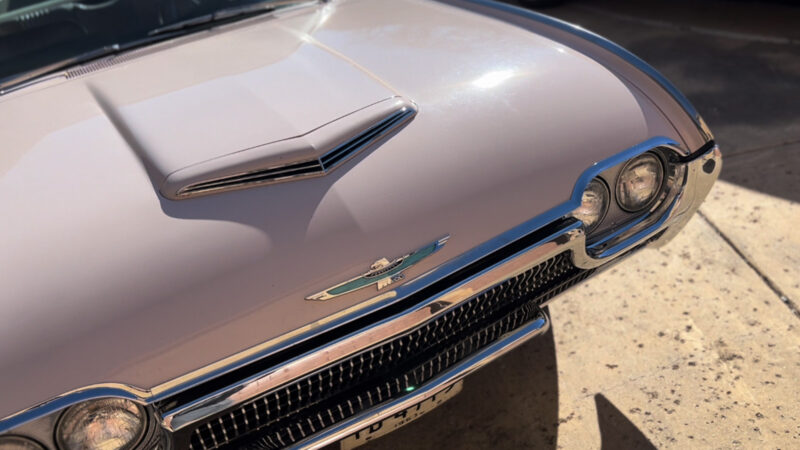
Photo by Jesus R. Garcia 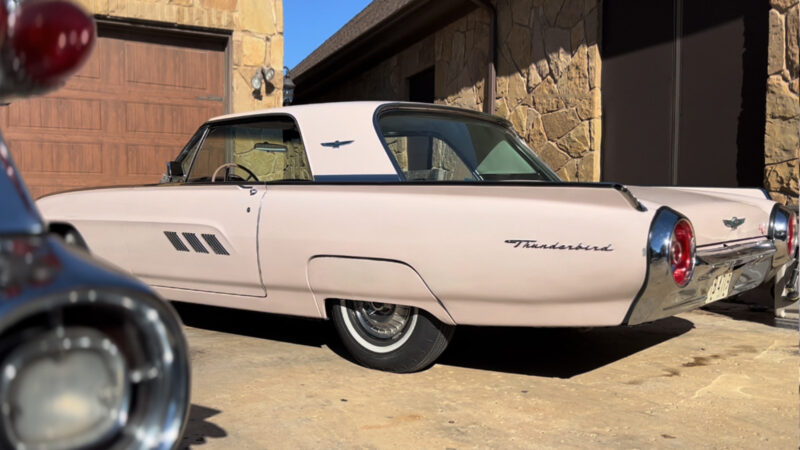
Photo by Jesus R. Garcia 
Photo by Jesus R. Garcia
Driving a survivor car like this is one of the easiest ways to experience history firsthand. More than listening to a live album on vinyl or wearing parachute pants to an 80’s party, driving an unrestored, original classic vehicle engulfs the driver with the period’s smells, sounds, and sensations. Thanks to Ryan, I had a chance to reflect on the year 1963 behind the wheel of this light pink Ford Thunderbird.
Space Race Design
American cars from the late 1950s and early 1960s offer more details in their design than an art gallery. Today, parking lots are overrun with SUVs sporting 50 shades of gunmetal grey with singing bass grilles and arched, angry headlights. Remove the brand name, and people would have difficulty picking out their vehicle from the herd. That is not the case with this 1963 Ford Thunderbird. There is no mistaking this for a Chrysler, Chevrolet, Buick, or Lincoln.
Today, parking lots are overrun with SUVs sporting 50 shades of gunmetal grey with singing bass grilles and arched, angry headlights.
This model was the last production year of the third-generation Ford Thunderbird (1961-1963). It’s commandingly known as the “bullet-bird” for its rocker-booster taillights that symbolize America’s neck-and-neck space race against the former Soviet Union – Russia. The whole car’s design is inspired by the optimism and paranoia of the Cold War and beating the Russkis to the moon. The body lines flow like a trajectory to look like an airplane’s fuselage with whitewall tires instead of wings. It starts at the pointed front and forms an almost teardrop when it reaches the taillights. Matched with a relatively low ride height, the Thunderbird looks like it glides over the road. You get the impression that if someone stood the car up onto its tail fins, it would blast off into the stratosphere.

Photo by Jesus R. Garcia
The Sahara Rose color on this Thunderbird pre-dates Mary Kay and pink gold iPhones. It’s a stunning shade that can vanish into white under direct sunlight. According to Ryan, this Thunderbird was ordered by the original owner Francis Roseberry in Sahara Rose with a rose-colored interior. The near-perfect interior of the car provokes a soothing feeling of tranquility similar to biting down on a deliciously sweet pastry. Modern vehicles need more color in their interiors, and this should be the benchmark.
What It’s Like to Drive an Original 1963 Ford Thunderbird
You walk up to the pink Thunderbird and reach for the door handle embedded into the car’s chrome trim. The door feels light even though it’s longer than most subcompact cars. You drop down into the soft, springy rose-colored bucket seats. You notice the steering wheel is far to your right because it is a swing-away steering column. When in park, pushing the automatic column up allows the driver to move the steering wheel to the right like an empty plate on a table to make room for dessert. The function of this feature is to make it easier for the driver to enter and exit the vehicle.
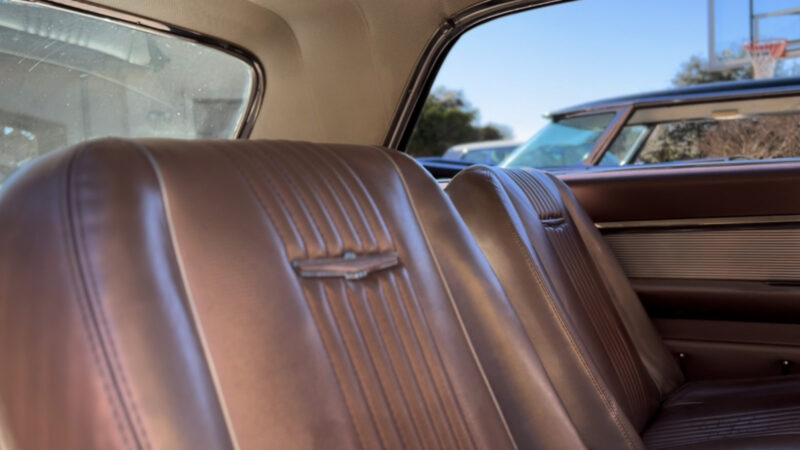
Photo by Jesus R. Garcia 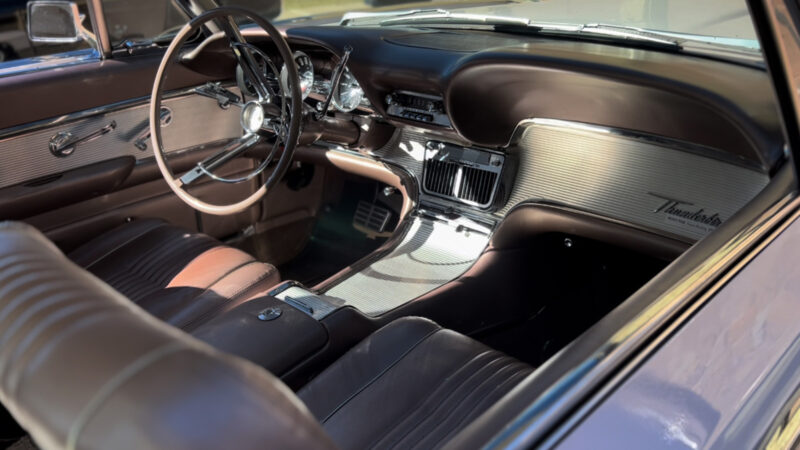
Photo by Jesus R. Garcia
You move the steering wheel, and it clicks into place in the center. Turn the key, and the massive 6.4-liter 390ci V8 awakes with a confident but subtle growl before purring itself warm. By 1963, the Thunderbird had long given up trying to be a Corvette counterpart. Instead, it was now entirely devoted to being an elegant personal luxury coupe with one-finger light steering, effortless throttle control, and a ride as smooth as the surface of an infinity pool.
Even with 300-hp on tap, the three-speed Cruise-O-Matic automatic transmission is in no hurry to get from point A to point B. Once on the road, you are suddenly under the spell of the car’s confidence. It’s a two-door coupe that weighs over two tons, a factory slab, and somehow it feels light as a feather. There is no anxiety. No urgency. None of the instant demands of modern life as it cruises down the line. The car’s nature is as mellow as an afternoon nap during a three-day weekend. It drives like you’re walking through knee-deep water – it’s heavy, smooth, and forces you to slow down physically, but also emotionally.
By 1963, the Thunderbird had long given up trying to be a Corvette counterpart. Instead, it was now entirely devoted to being an elegant personal luxury coupe.
You start to become sedated by the car’s boulevard cruiser attitude. Suddenly, you wonder why you stress about social media, the news, or other people’s opinions. The present takes over, and all you want to do is drive this Thunderbird at 40 mph forever with an endless playlist.
Driving Like It’s 1963
Apart from the intoxicating sensation of driving a classic car, it prompts the opportunity to reflect on the historical significance of the time. You imagine what it must have been like driving when gasoline was 29 cents a gallon and a custom three-bedroom, two-car garage home in California with a detached guest house retailed for $20k. You look down at the car’s AM/FM radio and imagine hearing the news of the Soviet Union sending the first woman into space, Valentina V. Tereshkova, in the Vostok 6 spacecraft, or listening to songs from The Beatles first album Please, Please Me. Moreover, it’s easy to imagine many people suddenly pulling over to the side of the road on November 22, 1963, when news of John F. Kennedy’s assassination broke.
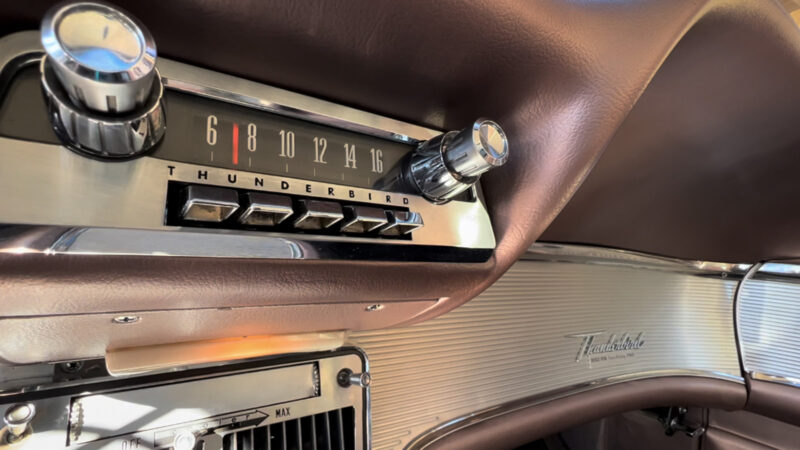
Photo by Jesus R. Garcia 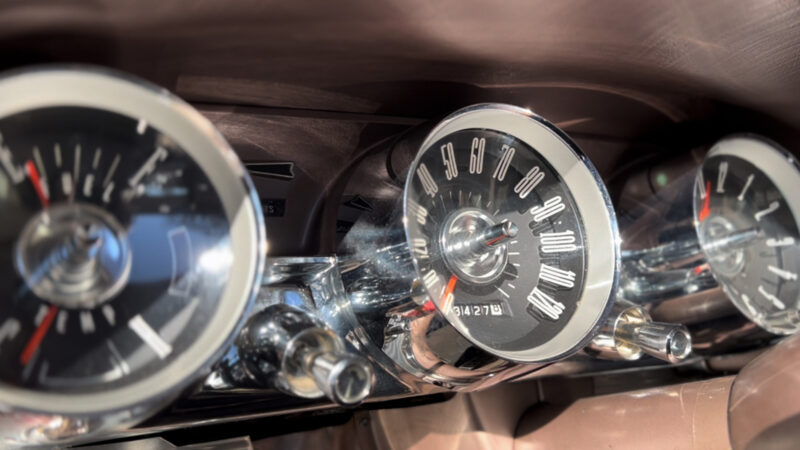
Photo by Jesus R. Garcia 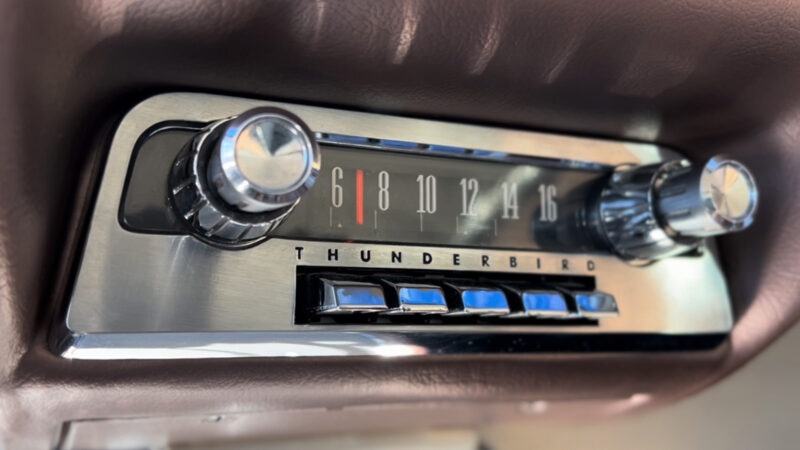
Photo by Jesus R. Garcia
The year 1963 ended with America losing its innocence. After the death of JFK, rock n roll gave way to the British Invasion, and American military presence in Vietnam began to steadily increase. The 1960s kicked off where this generation of the Thunderbird ended, so driving this car is like being in a snapshot of history between two eras in time. The era which inspired the vehicle’s design was now a present of new social issues, unclear war agendas, more economic recessions, and political mistrust. Yet, somehow, this old T-bird managed to survive the last 60 years while we dealt with essentially the same problems that began during the 1960s.
I like to thank Ryan Richards for letting me drive his 1963 Ford Thunderbird. Not only is it a fantastic vehicle to drive, but it took me on a journey of reflection over what has changed in the last six decades and what hasn’t.

